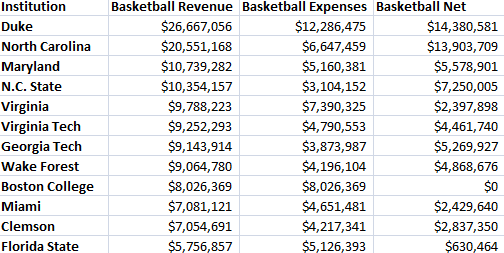Posted by KCarpenter on December 1st, 2010

Kellen Carpenter is an RTC contributor.
Moneyball isn’t the founding document of sabermetrics; that honor probably belongs to Bill James’ Baseball Abstract. That said, the reason that most baseball fans know about the advanced, modern approach to baseball statistics is because of Michael Lewis’s nearly 300-page story about the Oakland A’s. Well, they know either because of the the book itself or the uproar and debate around it. In any case, Moneyball was and remains a cultural phenomenon, a true breakthrough into the mainstream. Because of Moneyball, baseball and the dialogue around baseball has gotten smarter.

Battier Represents an Efficient Player Without Huge Stats
Basketball hasn’t had a single watershed moment like Moneyball. Progress in the advanced stats movement has come in fits and starts. Unsurprisingly, the closest thing to a mainstream breakthrough for advanced statistics in basketball came from Michael Lewis. “The No-Stats All-Star” was published February 13, 2009 in the New York Times, and focused on the world of advanced stats in basketball through the microcosm of the Houston Rockets player Shane Battier and his general manager, Darryl Morey. The article introduced the larger world to lots of fun ideas like offensive and defensive efficiency and adjusted plus/minus. It had a few interesting smaller nuggets too, and today we’ll be taking a look at one of those.
According to Morey (and the research), the worst possible outcome of a defensive play is to foul. In fact, Morey mentions that they identify other teams in the NBA that make use of the modern numbers-based thinking by looking to see which teams make a consistent and radical effort to avoid fouling. It’s a simple check, but one that makes sense: of the Four Factors that contribute to defensive efficiency, opponent’s free throw rate is the easiest to control. Telling a team to not foul is an easier instruction than “rebound better!” or “reduce your opponent’s effective field goal percentage!”
In any case, Morey’s observation made me curious as to which teams in college basketball make use of that mantra and consistently avoid fouling. To make sure that I didn’t wrongly consider a fluke year, I looked at the average team opponent free throw rate from 2006-10. For those keeping score at home, free throw rate is calculated by dividing attempted free throws by attempted field goals (and multiplied by 100 to get a slightly friendlier percentage). The average free throw rate for Divison I schools over the past five years comes in at 37.1%, while the fouling-est team registered a 54.3% and the best, least-fouling-est team managed a mere 23.3%. [the complete and fully sortable list is located here as a Google Doc] Now, to name names: The top four teams who foul the least in order: Ohio State, Siena, Connecticut, and North Carolina. Three of these teams are perennial championship contenders and Siena is one of the most successful mid-majors of the past few years. The rest of the teams near the top of the list are a little more scattered. The top thirty teams on the list are an odd admixture of regular contenders (Syracuse, Florida, Arizona), mid-major spoilers (College of Charleston, George Mason), and middling teams of all sizes (Central Connecticut, Samford, Notre Dame, Boston College). So that’s interesting, but inconclusive.
But, what about the bottom of the list? Is there any discernible trend amongst the teams that foul the most? Well, here, the picture is clearer. The bottom seventy-five or so teams are almost exclusively small conference schools that have had middling success at best, though the true booby prize goes to Central Michigan, who, from 2006-10 averaged an opponent free throw rate at an astonishing 54.3%. So while it’s unclear that rarely fouling is the true mark of a great team in college basketball (though it does appear to have helped some very good teams), fouling a lot seems to be the mark of pretty bad to thoroughly mediocre teams.
Read the rest of this entry »
| behind the numbers, Regular Features
| Tagged: arizona, boston college, central michigan, charleston, connecticut, efficiency statistics, florida, frank martin, george mason, georgia tech, jay wright, jay wright villanova, kansas st, moneyball, notre dame, ohio st, samford, shane battier, siena, syracuse, unc
Share this story











































